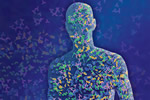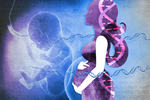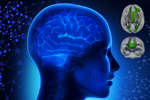

The Division of Intramural Research conducts a broad program of laboratory and clinical research
 NHGRI researchers and their colleagues are calling for health disparities research that focuses on the microbiome. Health disparities -- the negative health outcomes that impact certain groups of people - and the microbiome - the microorganisms that live in and on us -- are both influenced by people's environments and social interactions. As a result, the microbiome and health differences experienced by diverse people may be a two-way street, with the biological and environmental factors influencing each other, according to the perspective published in the journal Trends in Microbiology.
NHGRI researchers and their colleagues are calling for health disparities research that focuses on the microbiome. Health disparities -- the negative health outcomes that impact certain groups of people - and the microbiome - the microorganisms that live in and on us -- are both influenced by people's environments and social interactions. As a result, the microbiome and health differences experienced by diverse people may be a two-way street, with the biological and environmental factors influencing each other, according to the perspective published in the journal Trends in Microbiology.
 Through a simple blood test, physicians will soon be able to map the fetus' entire collection of genes (the whole genome) using fetal DNA that floats in the mother's blood. But a survey of 1,000 physicians says that ethical guidelines must be developed first. Researchers with the National Human Genome Research Institute (NHGRI) published their findings in the December 6th issue of the journal Prenatal Diagnosis.
Through a simple blood test, physicians will soon be able to map the fetus' entire collection of genes (the whole genome) using fetal DNA that floats in the mother's blood. But a survey of 1,000 physicians says that ethical guidelines must be developed first. Researchers with the National Human Genome Research Institute (NHGRI) published their findings in the December 6th issue of the journal Prenatal Diagnosis.
 NHGRI researchers have identified connections in the brain that are linked to Attention Deficit Hyperactivity Disorder (ADHD). Researchers studied large, multi-generational families to detect which brain connections are heritable in ADHD, those passed down from parent to child. These heritable brain features can help researchers discover and understand the genes associated with ADHD. The study was published November 16 in JAMA Psychiatry.
NHGRI researchers have identified connections in the brain that are linked to Attention Deficit Hyperactivity Disorder (ADHD). Researchers studied large, multi-generational families to detect which brain connections are heritable in ADHD, those passed down from parent to child. These heritable brain features can help researchers discover and understand the genes associated with ADHD. The study was published November 16 in JAMA Psychiatry.
 Three students share their stories aboutbeing a part of the National Institutes of Health (NIH) Summer Internship Program in Biomedical Sciences. The program, one of four NIH internship subprograms, was launched in 2015 to increase the participation of students from underrepresented backgrounds in science. Non-traditional college students and students from diverse backgrounds are given the opportunity to perform cutting edge research in a federal lab.
Three students share their stories aboutbeing a part of the National Institutes of Health (NIH) Summer Internship Program in Biomedical Sciences. The program, one of four NIH internship subprograms, was launched in 2015 to increase the participation of students from underrepresented backgrounds in science. Non-traditional college students and students from diverse backgrounds are given the opportunity to perform cutting edge research in a federal lab.
 National Institutes of Health researchers have identified a novel role for a gene known as heat shock protein 60 (Hsp60), finding that it is critical in tissue regeneration and wound healing. The study found that topical treatment of an Hsp60-containing gel dramatically accelerates wound closure in a diabetic mouse model.
National Institutes of Health researchers have identified a novel role for a gene known as heat shock protein 60 (Hsp60), finding that it is critical in tissue regeneration and wound healing. The study found that topical treatment of an Hsp60-containing gel dramatically accelerates wound closure in a diabetic mouse model.